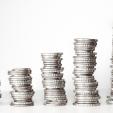The Fed’s Ice Bucket Challenge
Unless you have been living under a rock for the past month, you have more than likely heard of the ALS Ice bucket challenge. But, just in case you have been living under that rock--the challenge dares nominated participants to be filmed having a bucket of ice water poured on their heads and challenging others to do the same. The stipulation is that the nominated people have 24 hours to comply, or forfeit by way of a charitable donation to ALS. It is an ingenious marketing campaign that has thankfully raised awareness and millions of dollars for ALS.
However, we all know that while many made a monetary contribution, others just dumped a bucket of water on their head under the guise of helping the cause, simply because everyone else was doing it. In social media circles, this is known a slactivism. A pejorative term that describes "feel-good" measures, in support of an issue or social cause, that have little or no practical effect other than to make the person doing it take satisfaction from the feeling they have made things better.
And in a similar, but far more dangerous fashion, the Fed is engaging in its own form of “slactonomics”. It forces new dollars into the economy in order to stoke inflation, with the hope that rising asset prices will give the illusion of a booming economy. Therefore, the Fed’s specific Ice bucket challenge is: Put your cash in stocks, bonds and real estate assets; or watch your money earn no interest while it loses its purchasing power against those same assets. And, just like the herd mentality of humans causes us to dump ice water on our heads, the lemmings in the market are loading up on stocks despite the fact that equity valuations have become far removed from the underlying anemic fundamentals of the economy.
But here is the catch--the Fed thinks it can escape its huge marketing campaign that involved years of market manipulation with impunity. But, it has made an egregious miscalculation.
Wall Street has completely bought into the fantasy that the Fed can end its $3.5 trillion dollar QE programs and also normalize interest rates after having them near zero percent for over six years without hurting GDP growth or having a negative effect on equity market prices.
However, one of the unintended consequences from normalizing interest rates is the effect on the U.S. dollar. The dollar is already rapidly rising as the Fed winds down QE3; just imagine how high it would rise if interest rates were to rise here in America.
Beginning in early 2009, asset prices in the U.S. increased in tandem with that of the developed world, as most global central banks depreciated the intrinsic value of their currencies in concert. However, we now see the dollar rise and asset prices in the U.S. begin to fall (S&P Case-Shiller Home Price Index now down two months in a row) as the Fed winds down its latest $1.7 trillion dollar QE program and sets the table for a lift off from a zero percent Fed Funds rate in the first half of 2015. In fact, the dollar index has already increased from 79 in May, to over 82.6, which is a 52 week high.
The real estate market is starting to factor in the end of QE and the rise of the dollar, but equity prices seem to be still in a state of denial. The Fed’s Ice bucket challenge seems to have frozen investors’ brains into believing the exit from QE will be a smooth one for equities and the FX market.
While it is true that a strong and stable currency is the cornerstone of a healthy economy, it is also true that the journey from a massively manipulated currency to one that is subject to free-market forces is never a smooth ride. The Fed cannot tighten monetary policy unilaterally without causing massive disruptions in currency valuations.
The BOJ continues to monetize 7 Trillion yen per month of Japanese assets and the ECB is expected to begin its own substantial QE program very soon. If the U.S. attempts to raise rates while the developed world is printing money to keep rates low, the dollar will skyrocket against our major trading partners.
A surging dollar will crush commodity, real estate and equity prices, as it causes the reporting earnings of U.S. based multi-national corporations to plunge.
This is just one example of the volatile and disruptive ramifications associated with the normalization of interest rates; many of which appear to be out of the Fed’s risk calculations. In a very short time from now asset prices should undergo a sharp correction in an amount north of 20 percent because of the end of QE and the tremendous volatility in the U.S. dollar.
But, the Fed’s number one fear is deflation. Ms. Yellen and Co. will do everything in their power to make sure inflationary expectations are permanently anchored into the U.S. economy.
Therefore, the Keynesian mind-warped Fed will interpret the surging dollar and plunging stock prices as a catastrophic threat of deflation—even though the rebalancing of capital and asset prices are the only viable solutions to our economy. And is why, in the final analysis, the Fed will not venture very far into its tightening cycle—if it even attempts a serious effort to raise rates at all.
Investors should then use this upcoming correction in asset prices and cyclical period of deflation to position their portfolios in hedged positions that profit from an inexorable increase in the rate of inflation.
********
Michael Pento is the President and Founder of Pento Portfolio Strategies and Author of the book “The Coming Bond Market Collapse.”
twitter@michaelpento1
(O) 732-203-1333
(M) 732- 213-1295

















